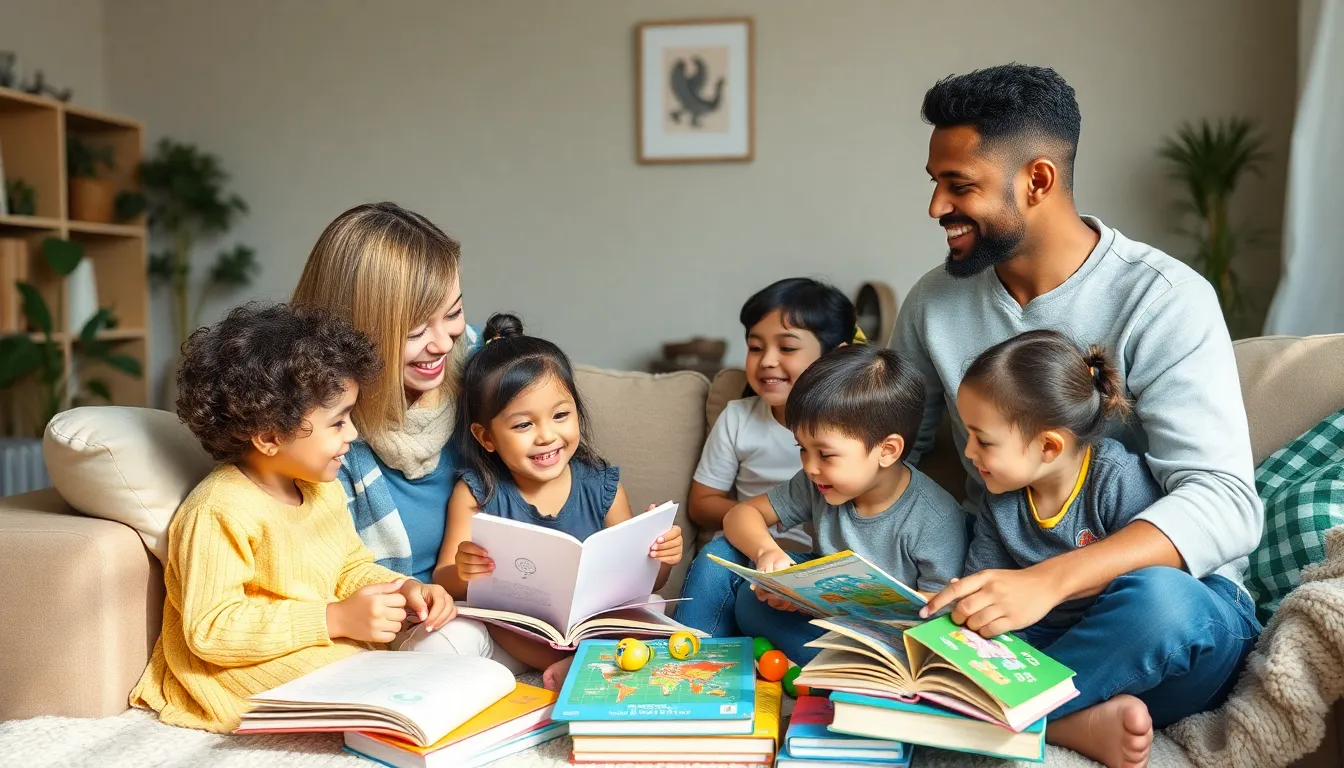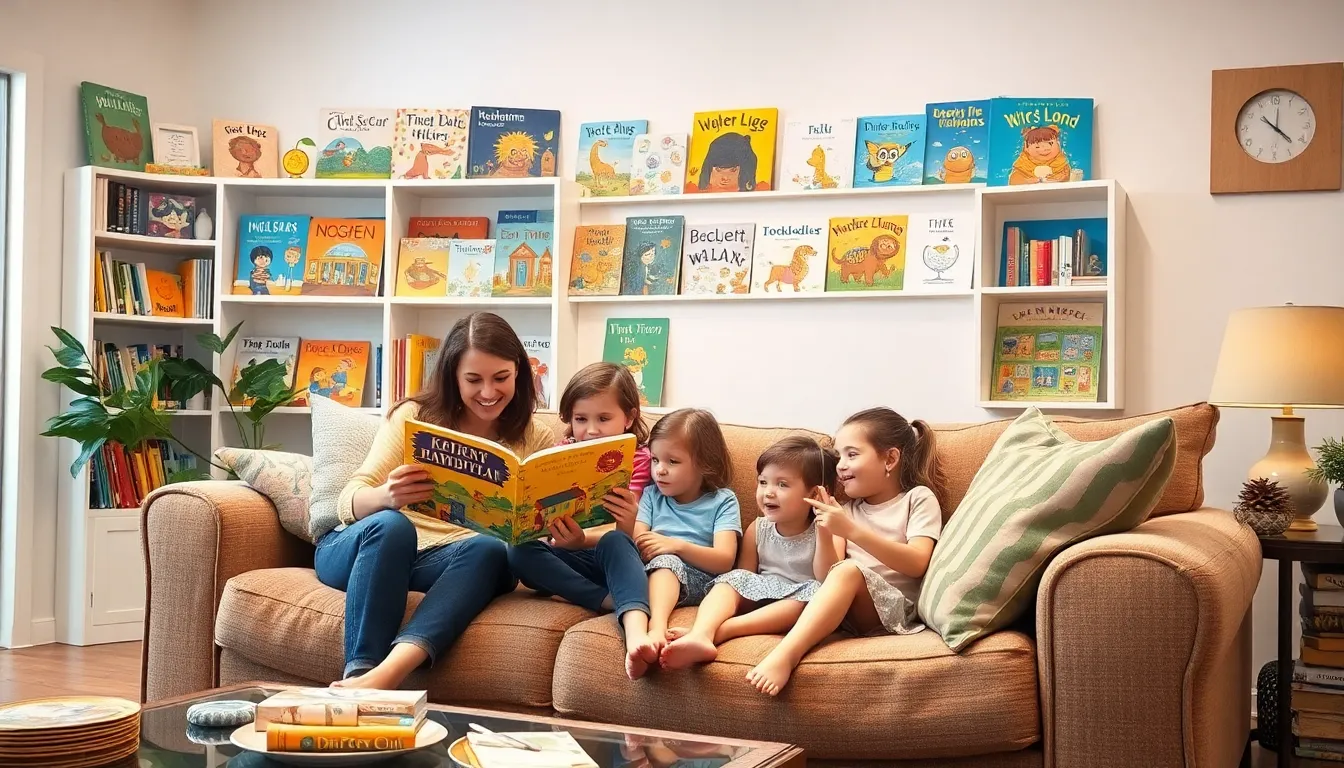Table of Contents
ToggleCreating a language-friendly home isn’t just about fostering communication; it’s about building connections. In a world where multilingualism is becoming the norm, designing a space that embraces diverse languages can enhance family dynamics and cultural appreciation. A language-friendly environment encourages everyone to express themselves freely, making it a nurturing space for learning and growth.
From incorporating bilingual bookshelves to using labels in multiple languages, small changes can make a big impact. This article explores practical tips and strategies to transform any home into a haven for language development. Whether you’re a parent raising bilingual children or simply passionate about languages, these insights will help you cultivate an enriching atmosphere that celebrates linguistic diversity.
Understanding The Concept Of A Language-Friendly Home
A language-friendly home facilitates effective communication among family members and encourages a love for language learning. It’s characterized by an environment that supports bilingualism and multilingualism, allowing diverse languages to thrive.
Elements of a language-friendly home include:
- Bilingual bookshelves: Incorporating books in various languages promotes reading and literacy skills.
- Labels in multiple languages: Displaying everyday items with bilingual labels aids vocabulary acquisition.
- Conversation practices: Engaging in regular conversations using different languages enhances fluency and confidence.
These components highlight the importance of creating spaces that nurture linguistic skills and cultural appreciation. A language-friendly home serves as a foundation for fostering strong family connections and promoting an inclusive atmosphere for all language learners.
Benefits Of A Language-Friendly Home

A language-friendly home enhances communication and nurtures cultural appreciation. Several key benefits stem from creating such an environment.
Enhancing Communication Skills
Enhancing communication skills occurs naturally in a language-friendly home. Exposure to multiple languages increases vocabulary acquisition. Regular conversations in different languages promote fluency. Active engagement with family members reinforces listening and speaking abilities. Children show improved confidence in expressing thoughts when they practice language skills daily.
Promoting Multilingualism
Promoting multilingualism fosters cultural awareness and cognitive development. Families embracing diverse languages benefit from heightened understanding of different cultures. Multilingual children demonstrate better problem-solving and multitasking abilities. Exposure to various languages enriches social interactions. A supportive environment encourages children to appreciate linguistic diversity, ultimately leading to lifelong benefits that extend beyond the household.
Key Features Of A Language-Friendly Home
A language-friendly home includes specific design elements and resources that enhance communication and foster a multilingual environment. These aspects support language acquisition and enable families to engage with different cultures effectively.
Design Elements
- Bilingual Bookshelves: Installing bookshelves stocked with bilingual books promotes literacy and encourages reading. Diverse genres support various age groups and interests.
- Multilingual Labels: Labeling common items in different languages aids vocabulary acquisition and reinforces language concepts in daily life. Use clear fonts and colorful designs to attract attention.
- Open Spaces for Conversation: Design open areas that invite family discussions. Comfortable seating arrangements enhance engagement and create an inviting atmosphere for language practice.
- Art and Décor: Incorporate art pieces that feature language elements, such as multilingual signs or cultural artwork. This adds visual interest and promotes cultural understanding.
- Technology Integration: Utilize language learning apps and devices within the home. These tools enhance exposure to different languages and provide interactive opportunities for practice.
Resources And Materials
- Bilingual Books: Curate a collection of bilingual books that include children’s stories, educational texts, and reference materials. This variety caters to multiple learning styles and reading levels.
- Language Learning Apps: Choose apps designed for all ages that focus on vocabulary, grammar, and conversation skills. Incorporating technology fosters engaging and fun language experiences.
- Flashcards: Create or purchase flashcards featuring vocabulary in multiple languages. These resources facilitate quick learning and can be used in playful family games.
- Audio Resources: Provide access to music and audiobooks in different languages. Listening to native speakers enhances pronunciation and listening skills.
- Cultural Materials: Gather resources such as cookbooks, travel guides, and documentaries. Exploring different cultures through various mediums deepens understanding and appreciation of languages.
Creating A Language-Friendly Environment
Creating a language-friendly environment involves deliberate strategies designed to support multilingualism and enhance communication within the family unit. This atmosphere nurtures language development and fosters meaningful interactions.
Strategies For Families
- Bilingual Bookshelves: Stock bookshelves with a variety of bilingual books across genres. Choose stories that reflect cultural heritage and encourage discussions about diverse topics.
- Multilingual Labels: Label everyday items in multiple languages. Place labels on furniture, appliances, and common objects to reinforce vocabulary.
- Daily Conversations: Engage in regular conversations across languages. Encourage family members to express themselves in their preferred language during meals, playtime, or designated discussion periods.
- Language Learning Tools: Incorporate language learning apps and software into daily routines. Use engaging tools that promote vocabulary building and grammar skills for all ages.
- Cultural Activities: Host cultural events or themed nights. Cook traditional meals or celebrate holidays that reflect different cultures, enhancing appreciation for languages used.
Community Involvement
- Language Exchange Programs: Participate in local language exchange groups. These gatherings provide opportunities for families to practice and learn from one another.
- Multicultural Events: Attend multicultural festivals or workshops. Interacting with diverse communities provides invaluable exposure to various languages and customs.
- Library Resources: Utilize local libraries for access to bilingual materials and programs. Many libraries offer storytime sessions or workshops focused on language development.
- School Initiatives: Encourage schools to implement language programs. Advocate for bilingual education options and extracurricular activities that promote language use.
- Volunteer Opportunities: Engage in community services supporting non-English speakers. Volunteering connects families with diverse populations, enriching understanding and language skills.
Creating a language-friendly home is an enriching journey that benefits every family member. By embracing multilingualism and fostering an environment that values communication, families can strengthen their bonds and enhance cultural appreciation. Practical strategies like bilingual bookshelves and multilingual labels not only support language development but also create a vibrant atmosphere for learning.
Encouraging regular conversations in different languages further nurtures fluency and confidence. This commitment to linguistic diversity lays the groundwork for strong family connections and a deeper understanding of various cultures. Ultimately, a language-friendly home is more than just a space; it’s a foundation for lifelong learning and growth that empowers individuals to thrive in an increasingly interconnected world.







